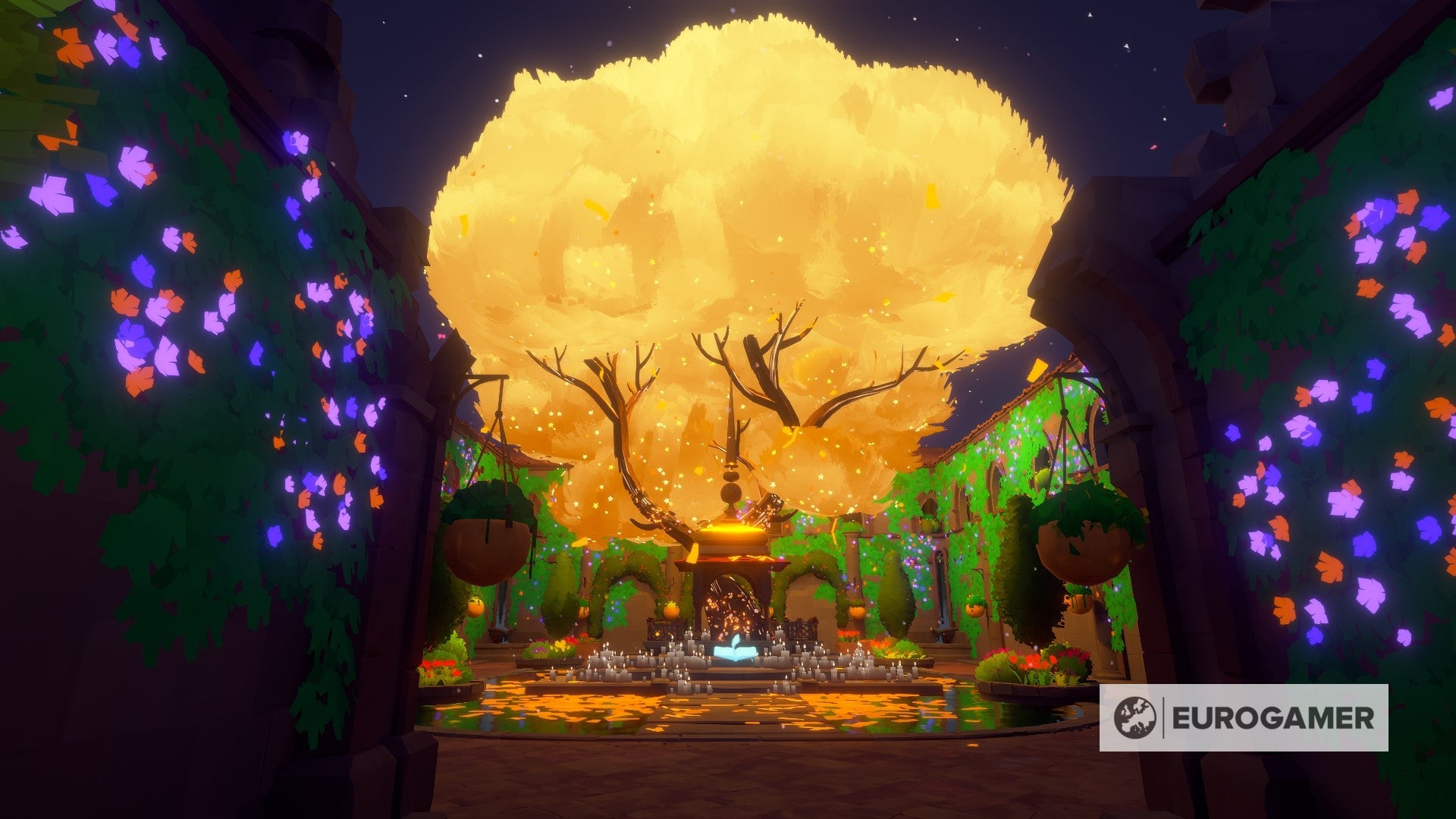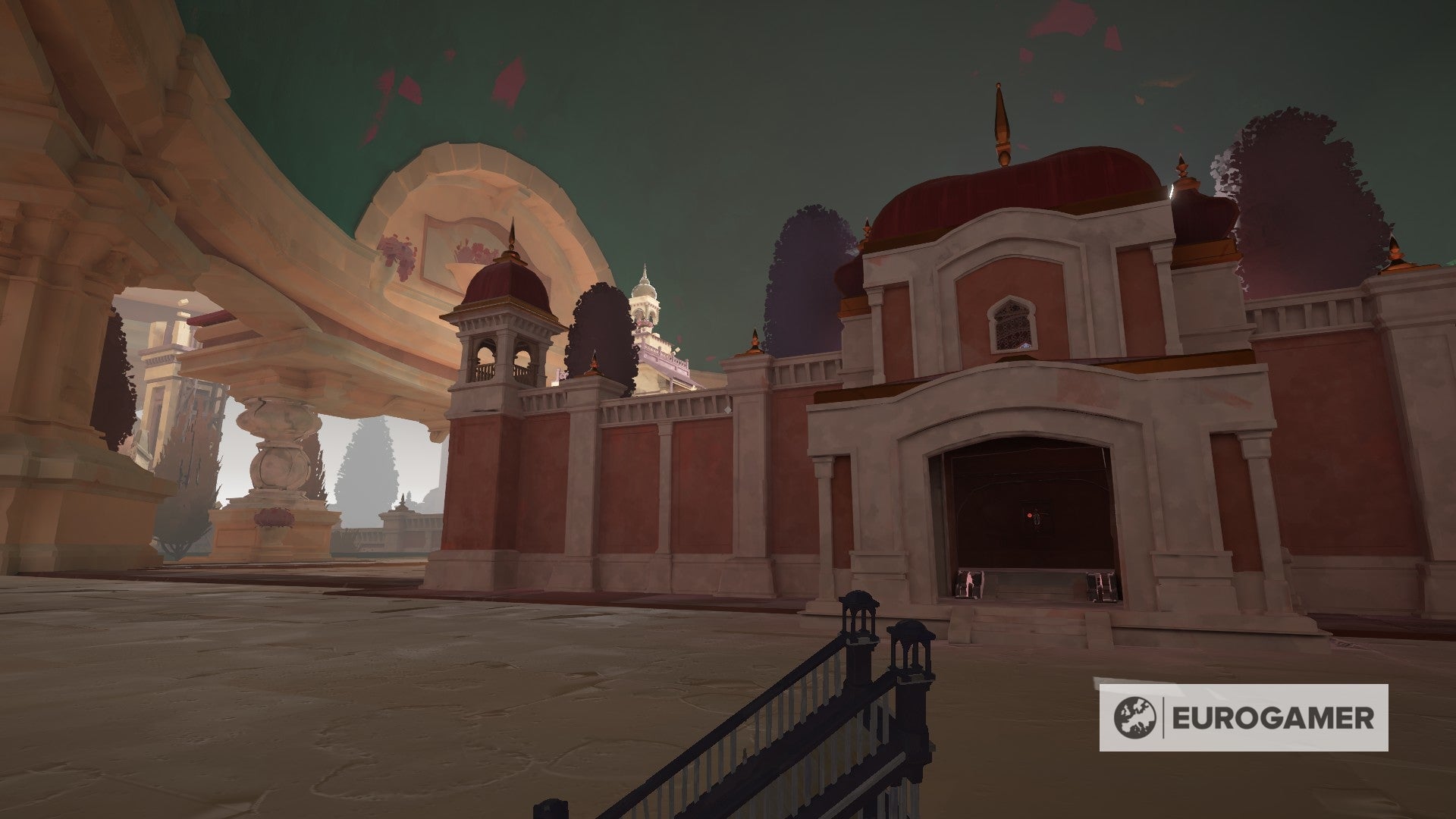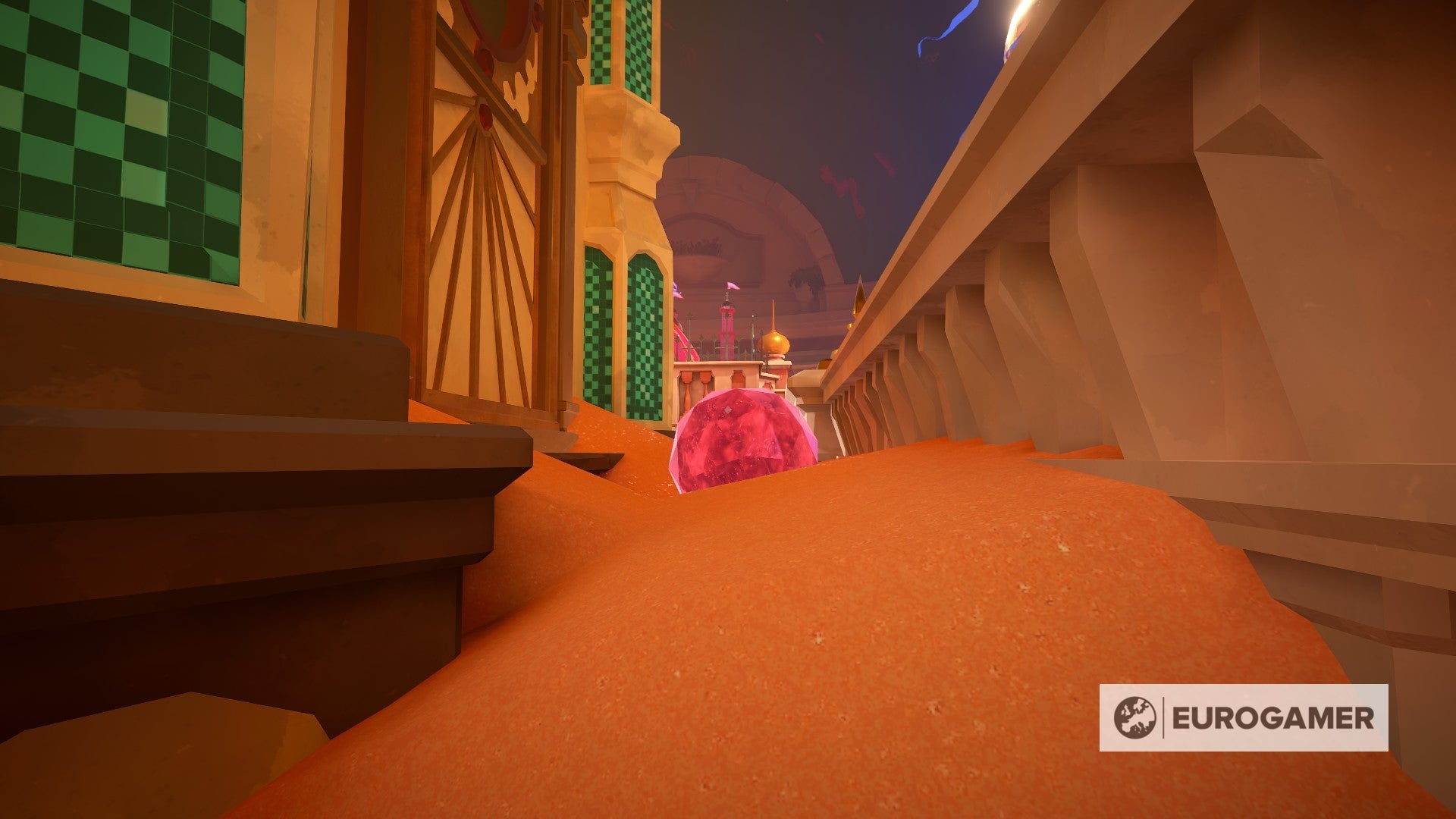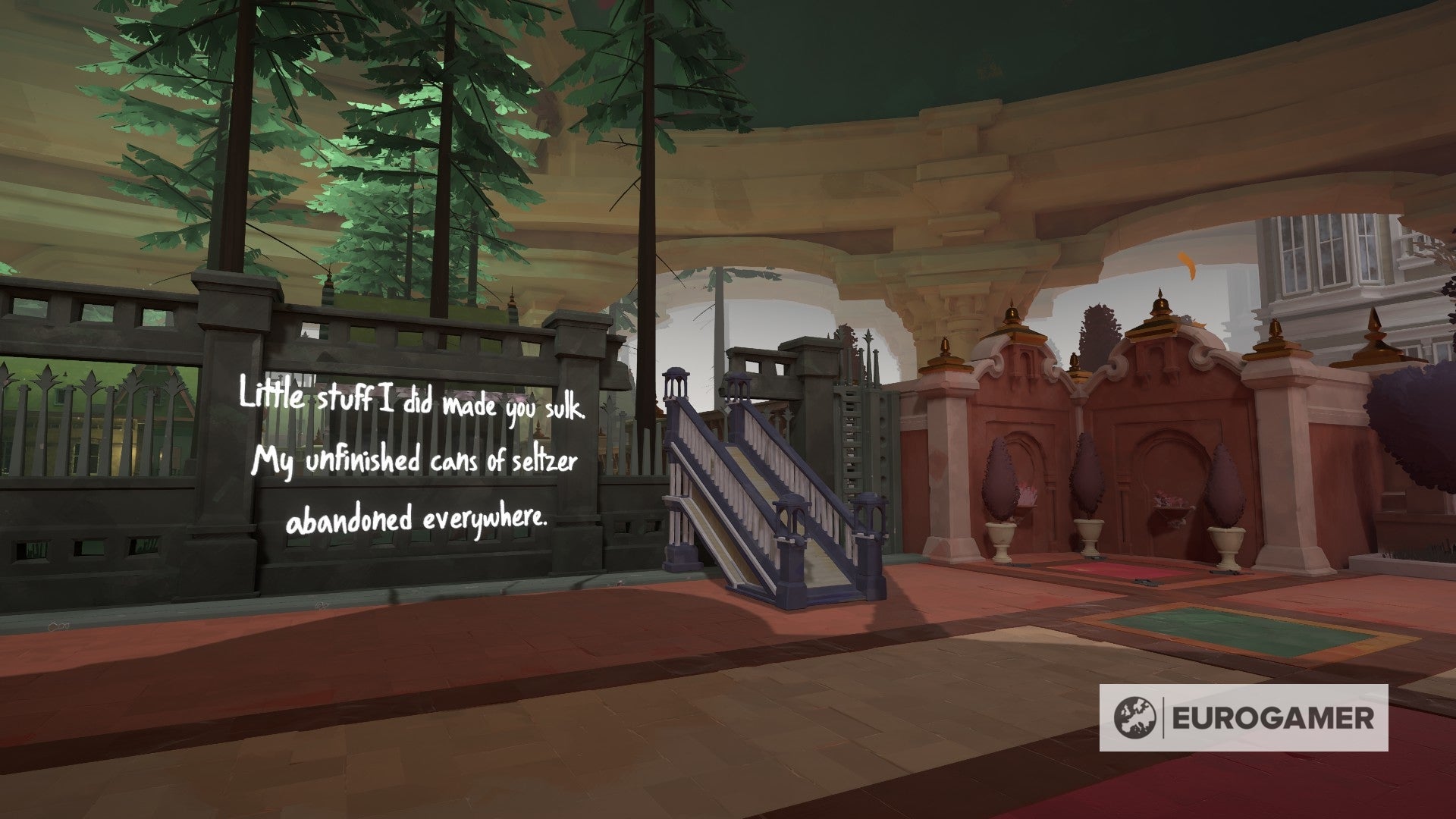Maquette is a recursive puzzler, primarily - another stylish, concept-heavy indie from arthouse publisher Annapurna Interactive - and the core is excellent. Each level, as such, occurs under a large, domed-roof structure, several stories high. Beneath this giant dome are four gated puzzle areas arranged opposite each other, crossroads-like, and in the middle is another dome, this time only about two stories high. Beneath that middle dome is a waist-high replica of the dome you’re in: four puzzle areas, an even smaller dome in the middle. Inside that middle dome? An even more miniature replica. Back outside that first big outer dome I mentioned? An even bigger replica - and presumably on and on from there. The puzzling comes, mostly, from the specific handful of objects that can be carried between these different replicas, and that appear in all of these worlds at once. This is also where things become very difficult to put into words, so, one attempt at an example before I just give up and quickly move on: there’s a giant red cube blocking your path in the medium-sized (normal-sized?) world, so giant it’s too big to move. However, turn towards the little replica in the middle, and the cube is also in there, to scale, and therefore only about knee-height - small enough to be picked up. So pick up the little cube and drop it somewhere else, and - tada! - now the path where the big cube was is clear too. Where things get really fun is when you start carrying things between these different replicas - taking regular-sized things into giant worlds, tiny sized things into regular ones, occasionally taking a very tiny sized thing into the regular world and dropping it like an idiot (like me), and so on. But again: hard to put into words. The point is it’s very clever, but also best not to think about too hard. There are rules that you could likely write down and utilise with greater precision (there are technically only three sizes of world to go between, for instance, thanks to some very clever architecture), but most of the time I just found myself muttering “make it big” or “I go small”, or maybe “I go big, make it small, move small block, I go small, climb block, I go big”, and so on. This did make sense at the time. Solving these puzzles is, mostly, a delight. The brilliance of that basic principle lingers - hints of Superliminal here, I should say, which was secretly always about size but there’s more emphasis on step-by-step logic here, and less on tricks of perception. It’s cleverly twisted and re-presented in slightly different forms, which I won’t say how for risk of spoiling, but crucially its best puzzles reflect the old genre ideal of gradual education: puzzles as these kinds of multi-stage, compound equations, the game designer your own personal, one-to-one maths tutor who teaches you the foundation - guiding with ambient light and sound cues and line of sight - and then adds the next rule and the next until you’re left to stand alone and apply everything you’ve learned at once. This is the reward of a good puzzle - the aha! of personal pride - and in Maquette the moments you find the right bridge or ramp or change of relative size are often full of it. Combined with the somewhat chintzy, clockwork texture of the environment, the spooky hollowness of it, the threatening, down-the-rabbit-hole aura of wrongness to making yourself one step too small, or a key three sizes too large? Magic. Similarly though, where Maquette diverts from that striking premise is where it starts to wobble. More than once I found the final part of a puzzle to be a bit of a non-sequitur - arbitrarily pullable levers to pull, invisible ledges to reach, one stray object (that red cube!) left lying about as inadvertently time-wasting bait, when everything else has a purpose. Moments like this feel like cardinal sins of puzzle-making, explicitly teaching you something - i.e.: big levers can only be reached when you’re small by doing some environmental platforming first, otherwise they’re for when you’re big - and then requiring you to do the exact opposite of that, a maths lesson where you’re taught brackets always come before indices, apart from when they don’t. There are a few other little hiccups - a couple of occasions where rough edges can get you stuck, for instance, forcing a reload of an earlier save. (I dropped an orb in an unobtainable spot while testing one solution, for example, and the final puzzle scenario - itself a tad underwhelming next to the huge potential it has on paper - featured a bug where a door that’s meant to open with a timer just didn’t open at all.) These are relatively minor issues though, or relatively isolated, at least, and understandable for such an ambitious, and frankly gorgeous debut from the team at Graceful Decay, but unfortunately there are a few other places that feel lacking. The puzzling itself trails off quite dramatically in the second half, as the game diverts from the dome-and-diorama-based norm to purely linear, almost frictionless paths that are only broken up by its narrative, which, a little surprisingly for publisher Annapurna and the clout it’s attracted, is the game’s real weakness. Maquette features not one but two Hollywood voices, in Bryce Dallas Howard (Jurassic World, Black Mirror) and Seth Gabel (Fringe, Arrow), but sadly doesn’t benefit from them. The story is soppy and weightless, telling a tale of two people who fall nauseatingly in and out of love, with some soggy writing - “Promise?” “Pinky promise” - delivered unanimously by quivering whispers, with little by way of purpose or drive. It opens almost like a mystery, leaning heavily on the memoir-written-on-the-environment style of other Annapurna joints, The Unfinished Swan and What Remains of Edith Finch, but it isn’t one. And in borrowing so heavily from the Giant Sparrow style it makes for an unfavourable comparison - especially to Finch, a masterclass in merging narrative form with mechanical function. What comes as a result is a sense of distraction, above all. Almost a sense that Maquette suffered from too much budget, from misplaced attention to themes or scale. The first half - three hours or so - is a brilliant success, a gorgeous, ingenious, delicately poised construction of spaghetti-brain recursion and latent atmosphere. The time you spend there, submerged deep in focus, is wonderful. The rest is interference.



